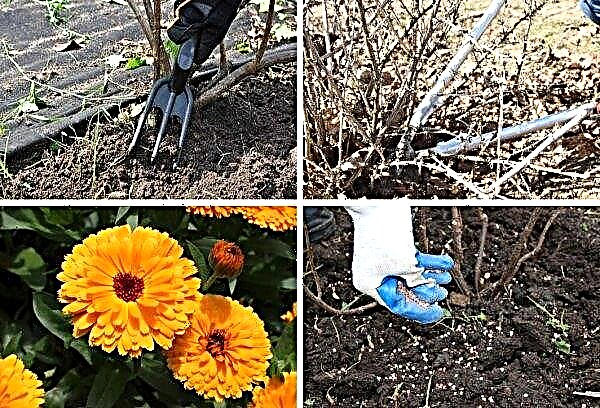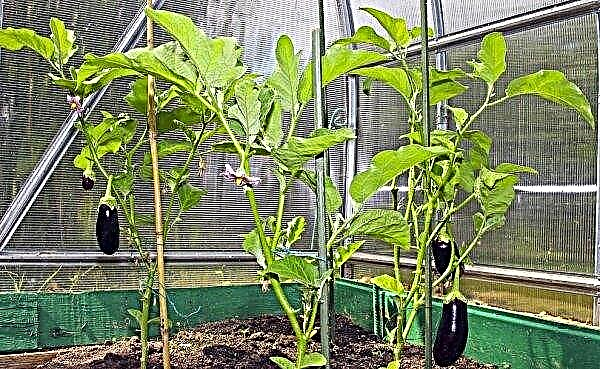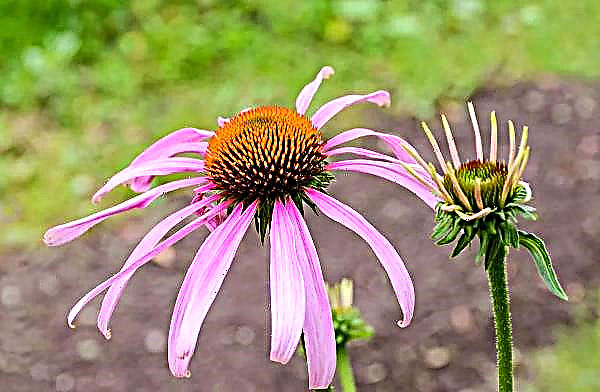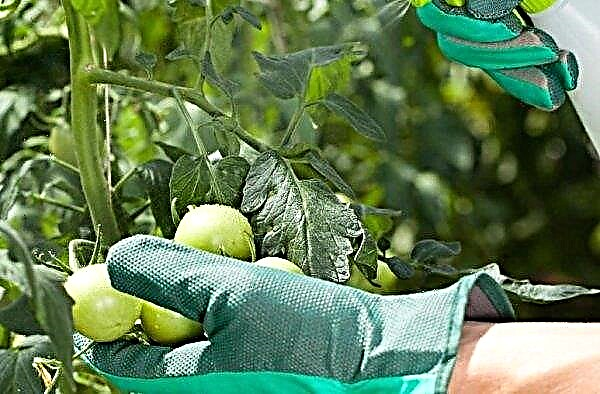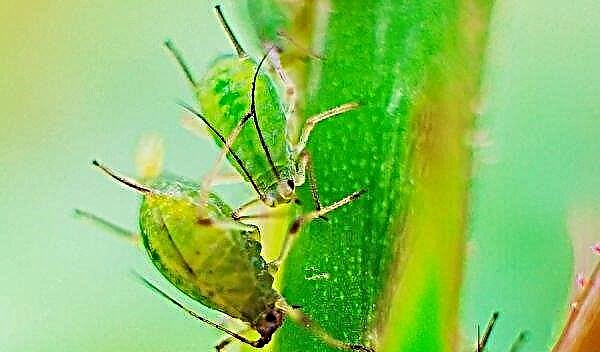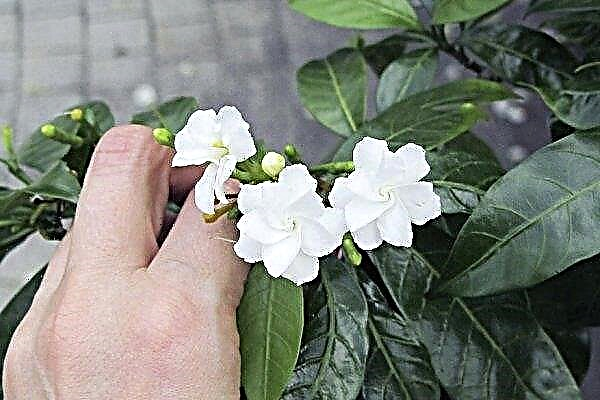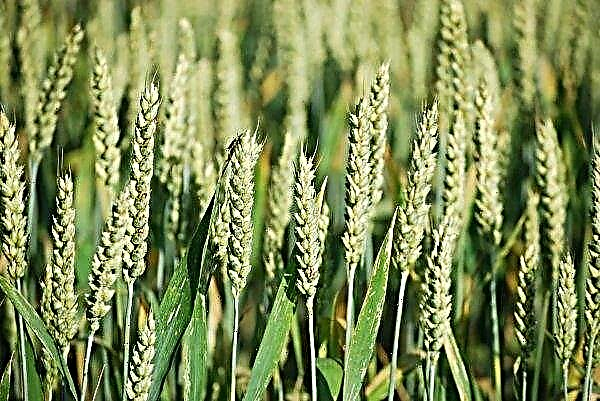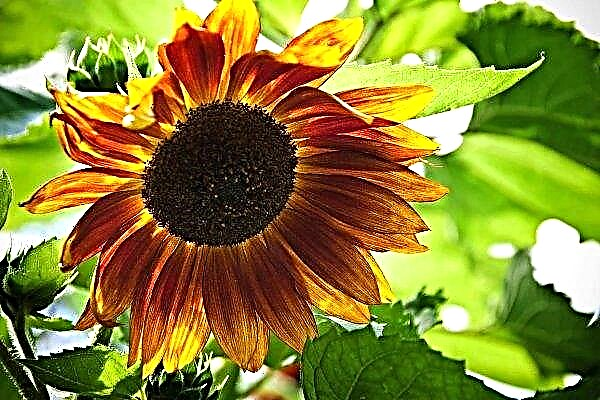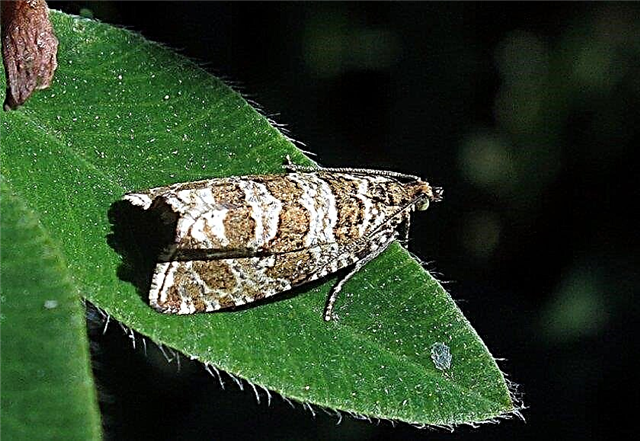Greenhouse cultivation of tomatoes is often used in regions with long winters and short summers. Inexperienced growers, making mistakes in care, may encounter the problem of flowering crops.
Why tomatoes do not bloom or bloom poorly in a greenhouse
When growing greenhouse varieties, it is important to consider the entire cycle, starting with the selection of seeds and their sowing.
Did you know? The annual number of tomato crops grown in the world is over 60 million tons.
Poor seedlings
The quality of seedlings, first of all, depends on the quality of the seeds. When buying planting material, you should pay attention to the description of the variety. Cultures bred for open areas are poorly adapted to greenhouse conditions. Sowing seeds must be carried out at the indicated time, given the climate of the region. The date of transplantation will depend on the sowing date. It should be borne in mind that a suitable soil temperature is +15 ° C. Be sure to apply the procedure for disinfecting soil and seeds.
If these procedures are ignored, there will be problems in the development of plants:
- slow formation of flower brushes;
- the formation of empty flowers;
- shedding of buds.
 2 weeks before transplanting, the seedlings are tempered. The first few days are carried out for 1-2 hours on the balcony or left by an open window. Gradually increasing the time to 24 hours.
2 weeks before transplanting, the seedlings are tempered. The first few days are carried out for 1-2 hours on the balcony or left by an open window. Gradually increasing the time to 24 hours.Shortage or oversupply of fertilizer
For the successful formation of flower buds, plants need a complex of trace elements, but it is equally important not to overdo it with their number.
A lack of magnesium and phosphorus leads to problems with building green mass:
- leaves twist and wither;
- the stems are thinning;
- few flower brushes are formed.
Important! For top dressing, it is better to choose complex fertilizers for tomatoes with detailed instructions.
With a lack of boron and potassium, flower buds fall off, so few fruit ovaries are formed. Excess or poisoning of plants with fertilizer is also detrimental.
Oversaturation with nutrients leads to the following problems:
- leaf necrosis;
- internode deformation;
- increased risk of fungal diseases.
Wrong microclimate
Tomatoes need to ensure the correct temperature and humidity.
Sharp deviations from the necessary indicators lead to plant disease:
- hypothermia - weakens the roots, slows growth, pushes the timing of the flowering period;
- overheat - the roots do not absorb moisture well, the plant is elongated in growth, which adversely affects the pollination process. If the temperature rises sharply during the flowering period, the plants will stop blooming, the existing buds can fly around.
Of great importance is the ventilation of the room and the frequency of irrigation, which affects the percentage of humidity of the air and soil.
Important! The formation of a microclimate must be taken care of even during the construction of the premises. In cold climatic conditions, you need to think about heating, choose the location of the structure.
Weak root system
Growing roots in tomatoes begins in the seedling stage. To stimulate the growth of the root system, seedlings in a certain period are planted in separate, large-sized containers. Weak roots at this stage are not able to absorb a large amount of moisture, so they water the bushes in small doses as the soil coma dries. For the same reason, seedlings are fed only when there are any health problems. The first feeding is recommended before transplanting in 5 days.
Other causes of a weak root system:
- too dense and poor soil;
- dense landing;
- excessive deepening of the seedling during planting;
- irrigation errors (water temperature, norm, frequency);
- excess fertilizer.
Did you know? Due to the presence of phytoncides in the composition, tomato pulp is used in the treatment of burns and wounds.
Diseases and Pests
Mistakes in the care and maintenance of the tomato can lead to diseases and pests. Common diseases during flowering:
- late blight - spots on leaves, foliage twisting. For treatment use "Fitosporin";
- brown spotting - fluffy coating on the leaves of a dark brown color. Treatment - Bordeaux fluid, the drug "Barrier";
- leaf mold - the leaves are covered with bright spots, curl up and fall off. Drugs for treatment - “Barrier”, “Fitoverm”;
- macrosporiosis - leaves and shoots are covered with dark spots, the tops wither. Methods of struggle - Bordeaux mixture, heavily affected bushes are removed.
 Disease prevention is the observance of humidity, regular ventilation. For prevention, before and during flowering, spraying is carried out with boric acid, fungicides.
Disease prevention is the observance of humidity, regular ventilation. For prevention, before and during flowering, spraying is carried out with boric acid, fungicides.The most common pests:
- wireworms - gnaw root and ground shoots. Destroy using Bazudin;
- whitefly - eats leaf juice, is a fungus carrier. "Confidor", an infusion of garlic will help fight it;
- scoop - nibbles shoots, foliage, petioles. Means of struggle "Bazudin".
What to do and how to properly care for tomatoes in a greenhouse
For the successful cultivation of tomatoes, it is important to consider each stage: from planting to harvesting.
Basic rules for caring for the crop:
- Tomatoes prefer light, loose soil. Dense soil is “diluted” with peat and sawdust - 10 l / 1 m². For nutrition, 4 kg / 1 m² of rotted manure is introduced.
- Digging holes for 5-7 days before the transfer of seedlings, so that the earth at the bottom has time to warm up. At the same time, the seedlings are sprayed with boric acid (1 g / 1 l of water), this will accelerate adaptation and positively affect flowering.
- When planting, the hole is not filled with soil flush with the surface, leaving a small distance for building lateral root shoots.
- After planting, water abundantly watered, the next watering in 12-14 days.

- The temperature of the content is +20 ... + 22 ° С, air humidity is up to 65%. If the values are exceeded, the room is ventilated.
- Pour the tomatoes warm to +23 ... + 28 ° C with water, under the root. The watering rate of 4-5 liters per bush, during flowering, decreases to 2-3 liters. Along with the procedure, loosen the soil, saturating the roots with oxygen.

- Tie up 12-14 days after landing on an individual support (small room) or trellis (large area).

- The bush is formed in 2-3 stems, the lower leaves touching the ground are removed. Stepson in the formation of shoots in the internodes and sinuses of flower brushes.

Separately, it is worth considering the rules of fertilizer culture.
Frequency and composition of top dressing:
During the growing season:
- the first - 2 weeks after planting. The present solution of mullein is diluted with water in a proportion of 1:10, on a bush - 0.5 l;
- the second - after 2 weeks. The same solution with the addition of 100 g of wood ash and 1 tbsp. l superphosphate (0.5 L per bush);
During flowering:
- the first is the formation of flower brushes. Nitrofoski solution 1 tbsp. l. / 10 l of water, 1.5 l per bush;
- the second is the stage of budding. Mixture: potassium sulfate - 30 g, superphosphate - 50 g, ammonium nitrate - 15 g per 10 liters of water; liter per plant.
Preventive measures
The above facts lead to the conclusion: the formation of flower brushes and fruitful flowering can be prevented by many factors.
To minimize problems, a number of preventative measures must be observed:
- Observe crop rotation.
- Clean and disinfect soil after harvest.
- Properly select the composition of the soil.
- To disinfect planting material and a container for seedlings.
- Provide the desired temperature and humidity.
- Observe the norm and frequency of irrigation and fertilizer.
- Perform preventive spraying.
 Tomato is partly a moody culture requiring strict observance of care. Knowing the rules for growing tomatoes in a greenhouse, observing them, you will get a large and tasty crop.
Tomato is partly a moody culture requiring strict observance of care. Knowing the rules for growing tomatoes in a greenhouse, observing them, you will get a large and tasty crop.





